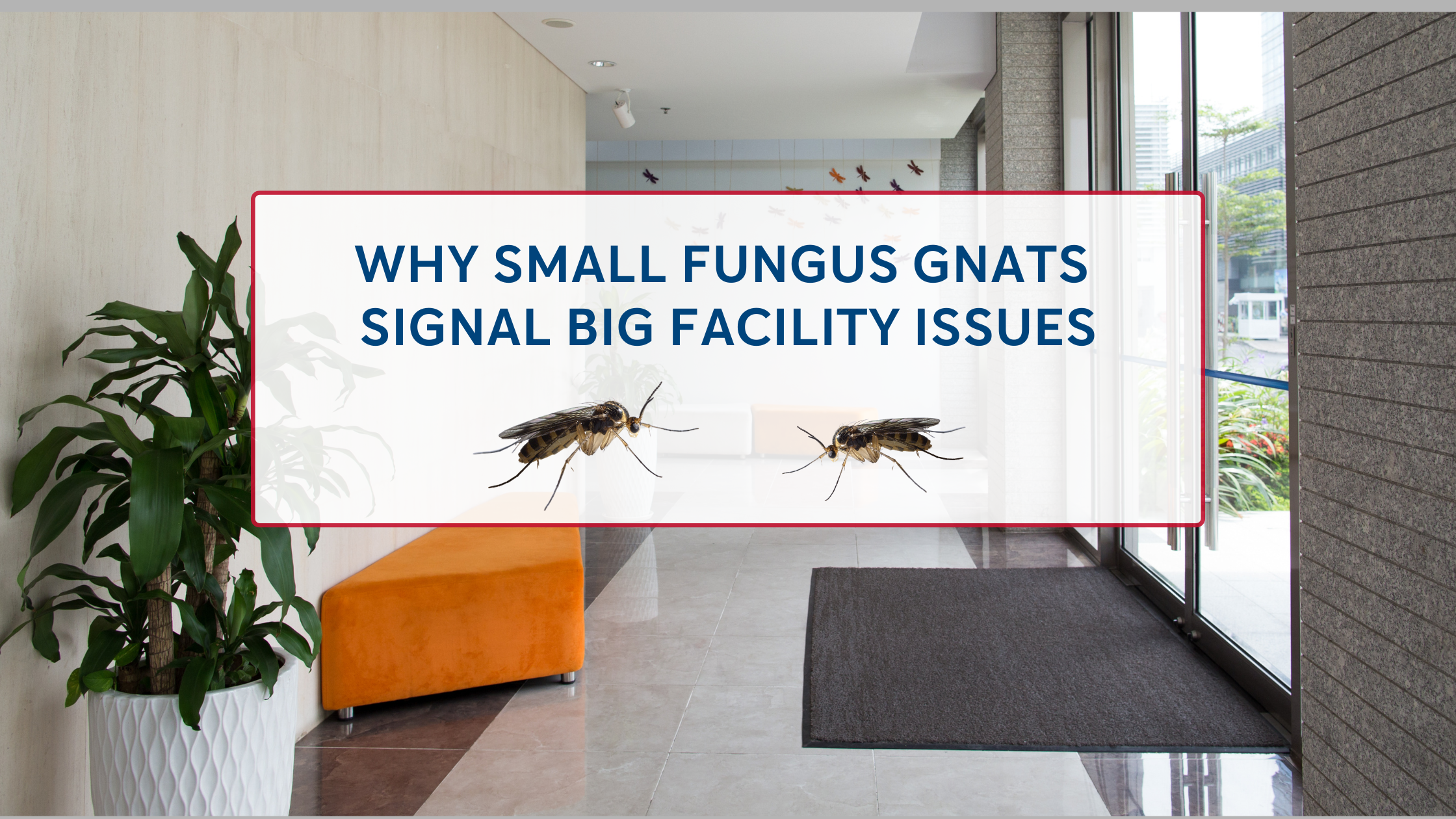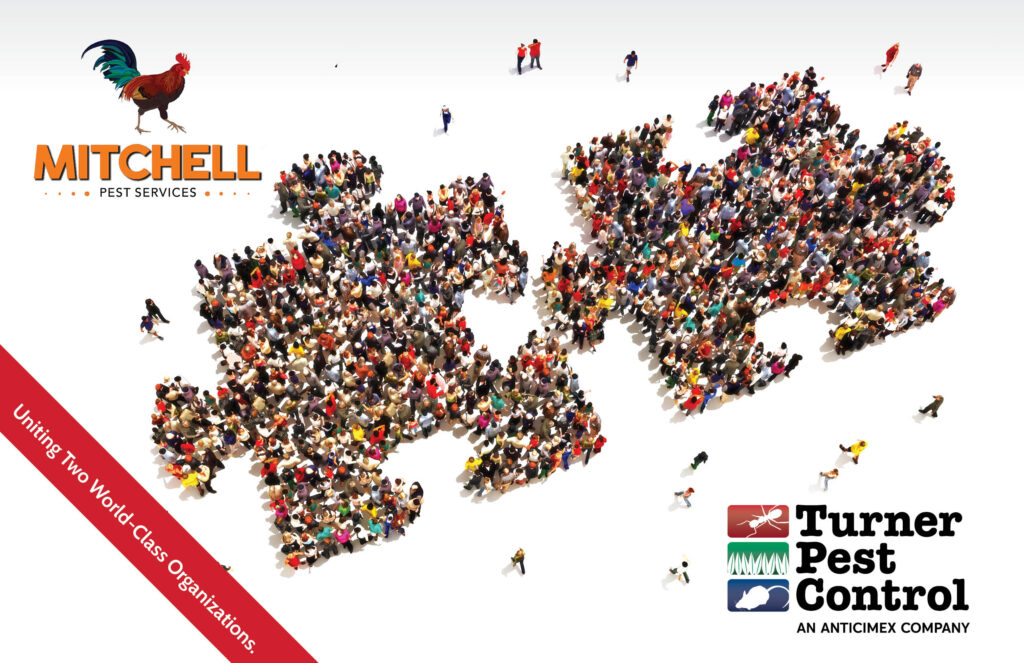
When it comes to pest concerns in commercial buildings, rodents and cockroaches tend to get the most attention. But there’s another, often-overlooked culprit that can indicate bigger problems within your facility: fungus gnats.
These tiny flies may seem harmless, but they’re one of the most overlooked pest problems in commercial buildings, acting as early warning signs of excess moisture, sanitation issues, or poor airflow—conditions that can lead to structural damage or secondary pest activity if left unaddressed.
As temperatures drop and buildings rely more on indoor climate control, reduced ventilation and trapped humidity can create the perfect environment for fungus gnats to thrive.
How to Identify Fungus Gnats in Your Commercial Building
Fungus gnats are small, dark gray to black flies—about 1/8 inch long—with slender legs and long antennae. Unlike fruit flies, which hover near food or drains, fungus gnats are typically found near soil, potted plants, or damp areas where organic matter builds up.
They fly low and move in short, erratic bursts rather than swarming—often near windows, planters, or drains. Spotting even a few can indicate hidden moisture problems inside walls or under floors.
Why Fungus Gnats Infest Commercial Properties
Fungus gnats thrive anywhere there’s organic buildup and consistent moisture. In office buildings, healthcare facilities, retail environments, and other commercial settings, they’re often found:
• Around indoor plants and lobby greenery with overly damp soil.
• Near floor drains, mop sinks, and custodial closets.
• In breakroom or restroom areas where plumbing leaks or condensation occur.
• Behind equipment or in mechanical rooms where humidity and poor airflow trap moisture.
Even in high-traffic, well-maintained properties, these areas can be difficult to monitor consistently, making fungus gnats a useful indicator of underlying maintenance concerns.
Why Fungus Gnat Activity Is a Red Flag for Facility Managers
While fungus gnats don’t bite or spread disease, they can create negative perceptions of cleanliness and oversight. For commercial properties, that can have broader consequences:
- Reputation and tenant experience: Visible pests—even small ones—can erode confidence in facility upkeep.
- Compliance concerns: Moisture and organic buildup can lead to sanitation or inspection issues.
- Operational costs: Reactive service calls are more expensive than routine prevention.
A single fungus gnat can lay up to 200 eggs at a time, and under warm, humid conditions, they can complete a life cycle in just two to three weeks. That means a minor moisture problem can quickly become a recurring nuisance if left unchecked.
Simply put, fungus gnats are a red flag for hidden facility vulnerabilities—and an opportunity to act before larger issues arise.
Fungus Gnat Prevention Strategies for Commercial Facilities
Proactive monitoring and environmental management can reduce fungus gnat activity before it impacts tenants or customers. Turner Pest Control recommends:
✅ Incorporate moisture checks into your facility’s regular inspection routine, especially near drains, HVAC systems, and irrigation lines.
✅ Adjust plant maintenance protocols to prevent overwatering and improve drainage.
✅ Ensure airflow and humidity control in mechanical and storage areas.
✅ Schedule professional drain and sanitation service to break down organic buildup in hard-to-reach areas.
How Turner’s Professional Commercial Pest Control Stops Fungus Gnat Issues
Turner Pest Control’s commercial pest control experts applies Integrated Pest Management (IPM) principles that go beyond surface treatments. Our specialists identify both the visible activity and the environmental conditions that allow fungus gnats—and other moisture-related pests—to thrive.
Through customized service plans and data-driven monitoring technology, we help facility teams protect their buildings, maintain compliance, and preserve tenant satisfaction.
Schedule a Commercial Moisture & Pest Assessment Today
Fungus gnats may be small, but the issues behind them can be significant. By addressing the root causes—moisture, airflow, and sanitation—you can safeguard both your property and your reputation.
Schedule a free commercial inspection to identify potential moisture and pest hotspots before they affect your tenants or customers.



